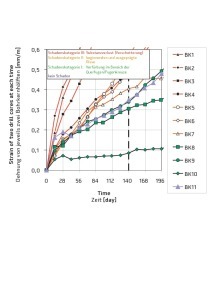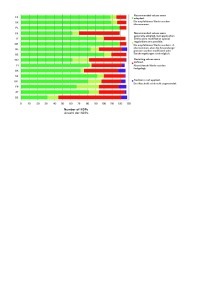Reliable prediction by cement testing alone?
The European concrete standard EN 206 is not harmonized and only comprises key points with the character of recommendations with respect to durability of concrete. Therefore, the member states apply different application and approval rules as regards the use of cement. The instrument of approval by means of the „European Technical Assessment (ETA)“ is provided at the European level. This is based on the associated „European Assessment Documents (EAD)“. One EAD issued to CSA cements indicates that durability tests are an essential part of the assessment.
To enable the use of new clinker-efficient cements, easy to handle methods for the prediction of the durability of concretes using such cements would be helpful. In a CORNET research project with the number 187 EN, the project partners, CRIC (Belgium), Smart Minerals (Austria), and VDZ (Germany), have joined forces in order to evaluate cement and mortar specimens in regard to the characteristic parameters and to compare and to correlate them with the results of the durability tests. The parameters to be evaluated are to supplement tests conducted in approval procedures as well as to reveal potentials for and limitations to development.
The international research project is partially based on the findings of a study carried out by VDZ, which had already been finalized and was funded by AiF. This study revealed that in many cases the compressive strength of concrete or mortar is not sufficient for an estimation of the durability. The parameters defined on the basis of the degree of hydration of the cement paste as well as the porosity of standard mortars provided a much more reliable correlation to the findings in respect of durability tests.
These findings will be assessed in the introduced research project regarding their transferability to the European level. The range of European concrete compositions will be examined by means of various durability tests and correlated to the parameters which possibly need to be modified.





